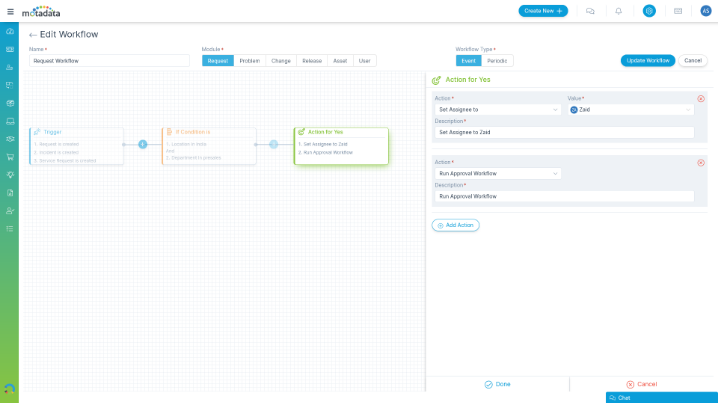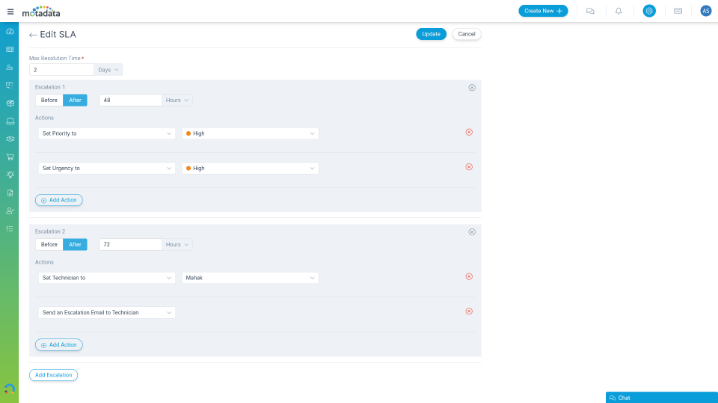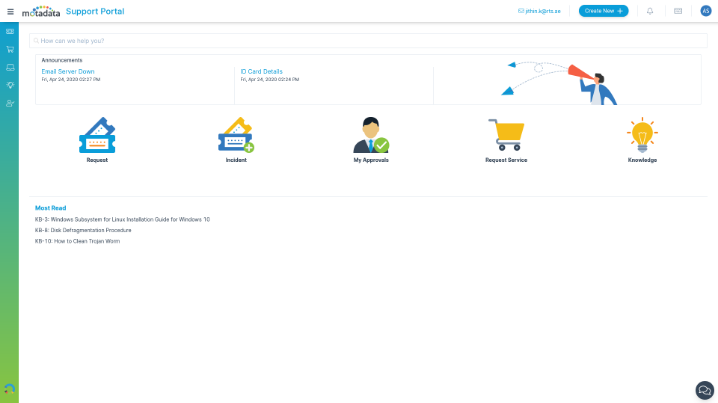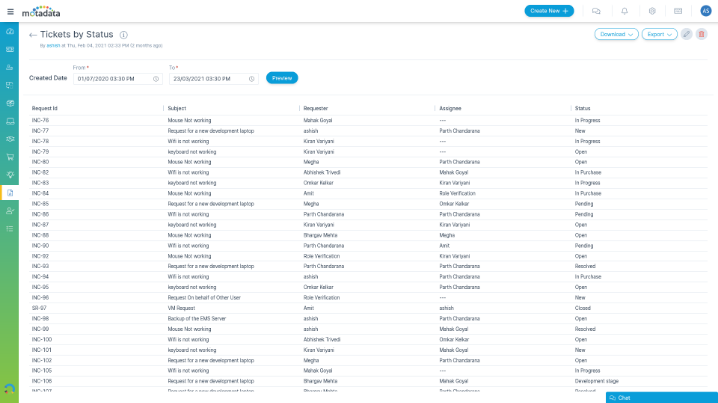Become More Productive with
IT Incident Management
Motadata ServiceOps ITSM platform’s ITIL Incident Management software enables you to streamline your ticket resolution process with proactive ticket management, smart automation, and multi-channel support.

Enhance Efficiency by Automating Ticket Management
Improve response time by automating every step of the ticket life-cycle right from categorization to assignment.
- Auto-assign tickets using AI-enabled smart load balancing algorithm
- Automate ticket prioritization using workflow automation
- Automate notifications for better communication with key stakeholders
Key Benefits
- Improved ROI
- Reduced Errors

Ensure Timely Resolutions with SLA Management
Increase employee satisfaction by automatically escalating requests that have not been resolved in time and assigning them to a different technician.
- Auto-assign SLAs based on criteria
- Response and resolution time escalation
- Auto-escalation of SLAs based on business rules
Key Benefits
- Faster Responses
- Improved Productivity

Empower End-Users with
Self-Service
Enable users to raise and track their tickets and find resolutions to common issues themselves by utilizing the knowledge base.
- Multi-channel support to raise tickets
- Self-Service portal supported by a knowledge base
- Live chat channel
Key Benefits
- Speedy Resolutions
- Better End-User Satisfaction

Monitor Service Desk Performance at a Glance
Identify issues, make informed decisions, and enable collaboration between teams from a single, unified screen.
- Gain visibility into all tickets and their progress with easy-to-use dashboards
- Track technician performance using out-of-the-box, customizable reports
- Export reports into pdf, csv, and xls formats
Key Benefits
- Better Visibility
- Enhanced Transparency
How to Quantify
ROI of Mobile Self-Service
Motadata?
People view Motadata as an alerting and root cause analytics engine, however; it is much more than that. It provides real-time data and alerts to address issues even before they arise and impacts the end-users. This isn’t even something theoretical. We have already achieved this through the next-gen platform.
Anil Nayer – AVP IT Kotak Securities
Other Features
Better equip your IT service technicians to handle unplanned disruptions with the ITIL Incident Management tool.
Ebook
IT Service Desk, A Complete Guide.
A guide to supercharge your IT service delivery.
Explore ServiceOps Service Desk
IT service management solution that is easy to use, simple to set up, and has everything you need to provide a seamless IT service delivery experience.
Try ServiceOps for 30 Days
Download our software free of cost for 30 days
Schedule Demo With Our Expert
Book a slot in our calendar and experience ServiceOps live.
Do You Have Any Questions? Please Ask Here We Are Ready to Help You Out
If your question is not listed here, please feel free to reach out.
The goal of Incident Management is to restore regular service operations as quickly as possible to minimize the negative impact on business activities while maintaining service quality.
A user can log an incident and track it through the incident life cycle until the service is restored and the issue gets fixed. Incident Management also enables proper communication with the users throughout the life cycle of the incident. Service levels and performance can be tracked, monitored, and analyzed through reports.
Incident management generally has the following process flow:
• Incident Logging
• Incident Categorization
• Incident Prioritization
• Incident Assignment
• Incident Tracking
• Incident Resolution
• Incident Closure
While the Incident Management and the Problem Management processes are similar, the primary distinction is in the final objective of the two processes. It is critical to know that the goal of Incident Management is to resolve an incident as quickly and effectively as possible while minimizing negative impact. Support teams may then proceed into Problem Management, to avoid similar incidents from occurring in the future by addressing the underlying root cause.
Understanding the difference between an IT incident and a problem may help business owners and managers efficiently communicate with support teams and create realistic expectations about outcomes.
Incident requests are requests that indicate any unforeseen disruption or decrease in the quality of an existing IT service. E.g., being unable to retrieve emails, facing a printing error, etc.
Service Requests are formal requests from users to the IT service desk to deliver support or provide new hardware, software, information, documentation, or advice. E.g., installing software on workstations, requesting hardware devices, changing lost passwords, etc.
So, if the existing printer is malfunctioning, then you may log an incident but if you want a new printer raise a service request.
Organizations use the Incident Management process to cope with unplanned incidents, reduce their impact on business processes, and reestablish normal service operations as soon as possible. Incident management helps organizations to increase their continuous service delivery levels by providing faster resolutions while maintaining agreed levels of service quality and availability.
Incident management also helps improve efficiency and productivity throughout the organization due to higher IT infrastructure reliability, thus reducing costs or revenue loss associated with IT incidents. It helps to offer better internal and external communication throughout an incident’s lifecycle, resulting in enhancing and maintaining user satisfaction.
The incident management process also helps organizations analyze and document incidents and how they have been handled to prevent and continuously improve the early detection and reduction of future incidents.
